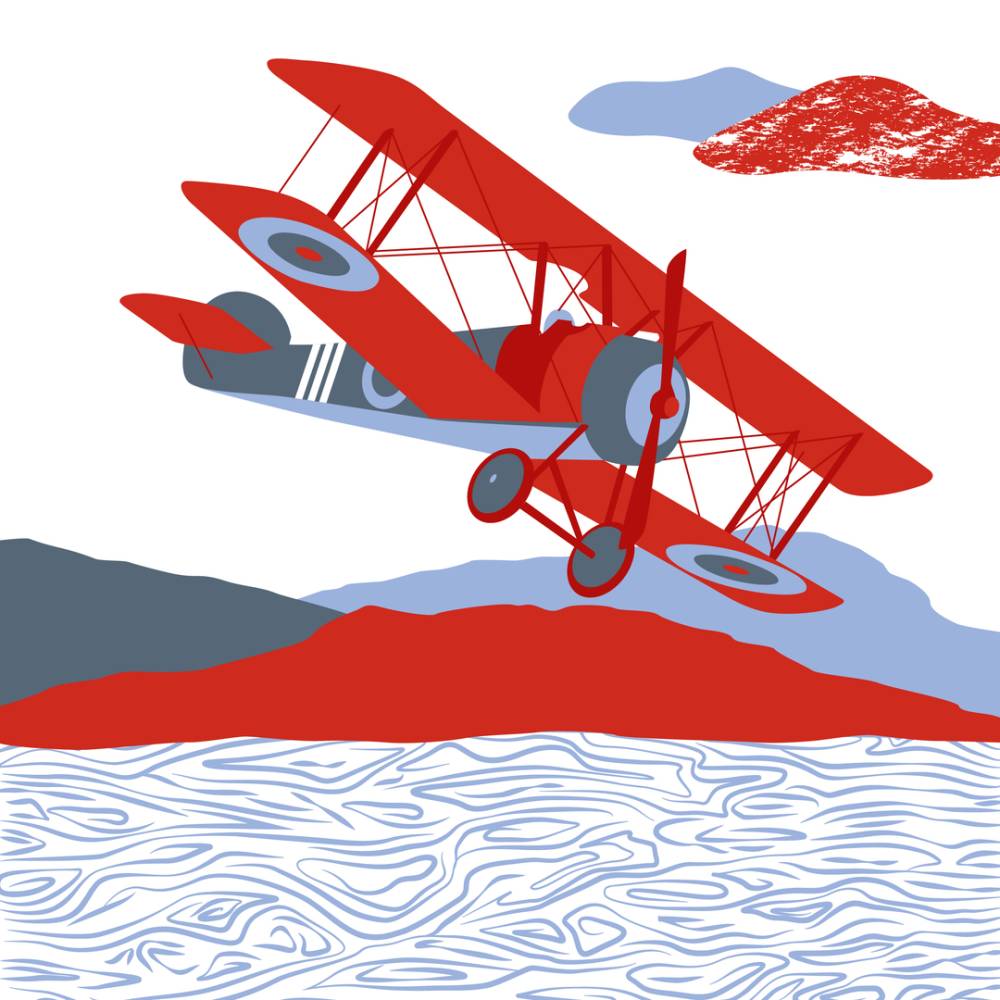A Shooting Tragedy
Louise Boulanger
A Shooting Tragedy
The six islands, which form the group commonly known as the Creags, rise from the limestone seabed off the island of Lismore, opposite the district and property known as Kilcheran. In 1898 the property was owned by Thomas Sopwith Esq, a mining engineer and his wife, Lydia. Sopwith used Kilcheran principally as a summer residence, also owning properties in Spain and England.
A keen outdoor sportsman and sailor, Sopwith employed several local staff. They made use of his small steam yacht, “Bessie” to acquire foodstuffs and supplies from Oban, as well as using the vessel to motor into Loch Etive to Kellys Pier at Taynuilt to indulge in his life passion, fly fishing for Atlantic Salmon on the River Awe. The local ghillie on the river, Maclennan, tutored both Sopwith and his young son, also named Thomas, in the intricacies of the sport, receiving an engraved silver tankard in appreciation which is still in possession of the Maclennan family. As it was believed that seals predated on the salmon during their migration into the Awe, it was then customary to cull the seals on the Creags every few years.
So it was that on the morning of 30th July 1898, Thomas Sopwith, accompanied by his son and his gamekeeper John Halliday, rowed over to the largest of the Creags. The ground is thickly covered in bracken and hard going for an eleven-year-old, prompting a respite sitting on some rocks. Thomas Jnr. laid his rifle across his lap, and the gun suddenly went off, shooting his father through the thigh, severing the femoral artery. After attempting unsuccessfully to staunch the flow of blood, Halliday carried the unconscious Sopwith back to the boat and rowed the quarter-mile back to shore to raise the alarm. His efforts were to no avail, and Thomas Sopwith Snr. succumbed to his injury less than two hours after the fatal shot.
Doctor Edwin Bailey was collected by the MV “Bessie” from Oban and would issue a death certificate for the grieving family. Thomas Jnr. was traumatised by accident and it haunted him for the rest of his life, but he would become one of the best-known names in early British aviation, whose name is synonymous with the aircraft finally able to counter the excellent German machines which had dominated the skies in the First World War between 1914-16. The memories of Lismore and Oban stayed with Sopwith during his pioneering development of an aviation company before the war, producing aircraft of his own design.
That local knowledge he had acquired of the Oban area led him to choose the town as a destination for the third leg of a Round Britain Flight competition run by the Daily Mail in 1913 with prize money of £5,000 (£100,000 in todays money). The aircraft he designed and built was a two-seater biplane capable of water landings and known, appropriately enough, like the Sopwith Waterplane. To modern eyes, this was a hopelessly fragile-looking aeroplane for the five-leg circuit of destinations across Britain, which at that time included Eire. The man chosen by Sopwith to fly the aircraft was the company test pilot, Harry Hawker, and he was to have a mechanic, Henry Kauper, as the second crew member. Mindful of all possible publicity, Sopwith intended that the Waterplane should arrive at Oban during the Royal Highland Yacht Club Regatta on the 15th August and that the aeroplane was to be beached overnight at Little Ganavan.
Arrangements were in hand to refuel and guard the Waterplane with the assistance of two further Sopwith company personnel who travelled to Oban by train. Hawker and Kauper were booked into the Columba Hotel. The aircraft arrived over Oban Bay, flying up the Sound of Kerrera on the evening of 15th August and making two circuits of the Bay above crowds of enthralled promenaders before landing in Ardentrive Bay. Bearing in mind that this event was only ten years after the very first flight of a powered aircraft in the world, this was a significant occurrence for Oban. Hawker taxied the aeroplane out of Oban Bay and round to the sandy beach at Little Ganavan, where the biplane was hauled up out of the water for service and refuelling. The following day, in front of an appreciative gathering, the Waterplane took off and headed on its next leg, the flight to Dublin. The aeroplane encountered strong westerly winds and was reduced to speeds only just above stalling.
Still, when it turned into the Shannon estuary leading to Dublin, Hawker suffered severe leg cramps and lost control, his leg useless. The aircraft descended into the water near a fishing boat, and both he and Kauper were plucked from the sinking aircraft, although Kauper has sustained a broken arm in the crash. Despite the failure of the enterprise, the pair received £1,000 for their efforts as the three other aircraft in the race had never even managed to take off. Tommy Sopwith would go on to produce such famous aircraft as the aforementioned Sopwith Camel and the Sopwith Pup before becoming a director in the new company formed by his friend Harry Hawker, Hawker Aircraft. Sir Thomas Octave Murdoch Sopwith, CBE, Hon FRAeS, died aged 101 at his home in Hampshire in 1989. He never forgave himself for what happened on Creag Island that fateful July morning.
This contribution was made by Neil Owen. Neil is a local historian and heritage enthusiast
More information on visiting the area can be found here.
